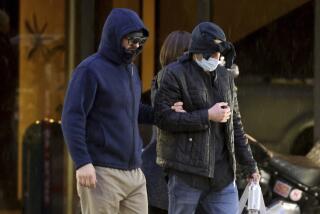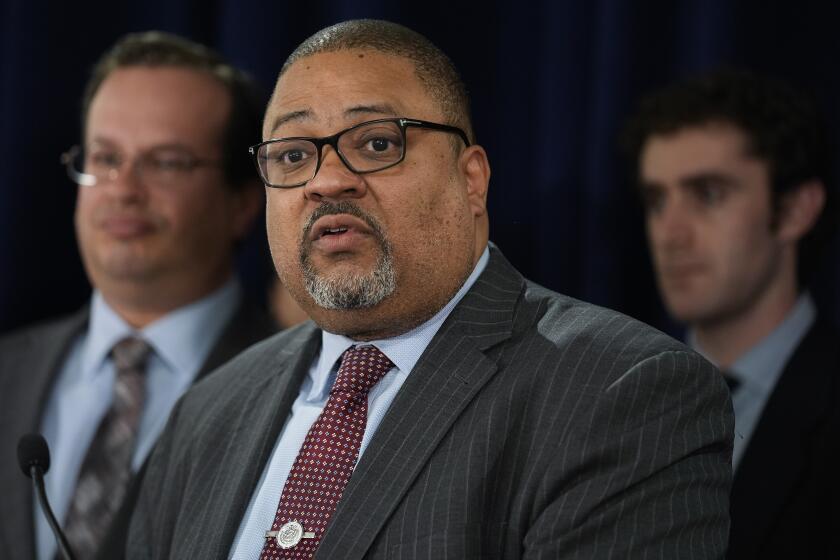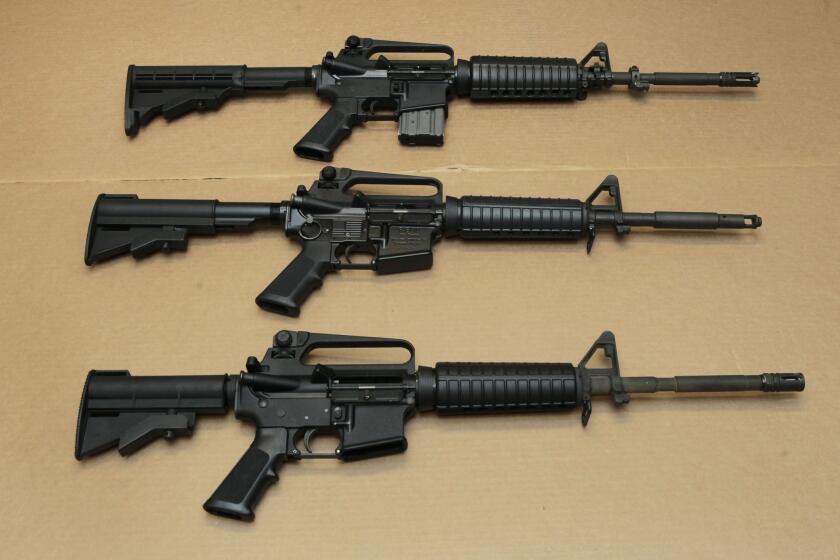CIA Probes Missing Memo on DNC Official
An internal memo warning then-CIA Director John M. Deutch that a top Democratic Party official had improperly contacted the CIA on behalf of a major campaign contributor mysteriously vanished in the spy agency’s upper reaches in 1995, and its disappearance is now the focus of an investigation into alleged efforts to exploit the CIA for political purposes.
The CIA official who sent the warning to Deutch has since been identified in news accounts as having cooperated with Democratic National Chairman Donald L. Fowler on behalf of a major Democratic contributor.
That has left some who are familiar with the case wondering whether the CIA officer was set up as the fall guy to protect more senior CIA officials who may have failed to heed his warning.
Regardless of the answer, Fowler’s willingness to reach into the U.S. intelligence community on behalf of a generous donor who wanted the CIA’s help in gaining access to President Clinton and Vice President Al Gore has raised new questions about the blurring of the line between the cash-hungry Clinton reelection campaign and the government.
Fowler tried to assist Roger Tamraz, a Lebanese American entrepreneur seeking U.S. support in his effort to build a multibillion-dollar pipeline from the Caspian Sea through the strife-torn Caucasus to Turkey.
Tamraz, who is wanted by the Lebanese government on bank embezzlement charges, attended six White House events with Clinton, including at least three after a National Security Council official urged the administration to bar him from such high-level access.
The December 1995 memo warning of Fowler’s allegedly improper contacts with the CIA was signed by William Lofgren, then-chief of the central Eurasian division in the agency’s directorate of operations, its clandestine espionage arm.
The warning memo carried a “routing code” showing that, in addition to Deutch, it was also addressed to many of the CIA’s other top officials--including Nora Slatkin, the agency’s executive director and third-ranking official, and David Cohen, deputy director for operations and head of clandestine espionage.
U.S. intelligence sources stress that Lofgren sent the memo, but CIA officials insist that there is no evidence Deutch or the other senior officials to whom it was addressed actually received it. CIA sources also say that Deputy CIA Director George J. Tenet, Clinton’s nominee to head the agency, never received the warning either.
Phone Calls Leave Electronic Record
The mystery of the missing memo is now the focus of an inquiry by the CIA’s inspector general into contacts between Fowler and the CIA, according to U.S. intelligence sources.
Lofgren, who has since retired from the agency, refused comment. After leaving the CIA, he briefly worked as a consultant for Tamraz.
Fowler denied that he had contacted the CIA, but two calls from Fowler to the CIA were electronically documented on a CIA caller ID system, according to a White House source. The CIA’s “inspector general has determined to his satisfaction that those calls were made by Don Fowler,” the source said. In addition to the electronic record, he said, contemporaneous notes show that the caller identified himself as Fowler on both occasions.
Sources say that Lofgren’s warning came in response to repeated attempts by Fowler to enlist the CIA to help Tamraz, who had a long-standing, secret relationship with the CIA.
When he found that he had been shut out of the White House, Tamraz told DNC officials that the resistance was probably due to his shadowy past in the Middle East, and that the CIA could vouch for him to overcome the gatekeepers at the National Security Council.
In October 1995, Tamraz also complained about being denied access to the White House during a dinner with DNC Finance Chairman Marvin Rosen, sources say. That same month, Fowler telephoned one of Lofgren’s subordinates in the central Eurasian division who had served as Tamraz’s contact in the agency, leading CIA officials to believe that Tamraz had told Fowler whom to call.
Fowler asked the CIA officer to send a memo about Tamraz and his activities on behalf of U.S. intelligence to Sheila Heslin, a specialist on the Caucasus at the NSC who had raised red flags about Tamraz at the White House. Fowler told the CIA officer that Tamraz was trying to obtain a meeting with Gore but needed to overcome the NSC’s resistance.
Heslin had met with Tamraz in June 1995 about his pipeline proposal and afterward had told her superiors at the NSC that Tamraz should not be given meetings with anyone else further up the chain of command. She had also already obtained a CIA memo on Tamraz before her first meeting with him in June.
But in July 1995, Tamraz began contributing generously to the Democrats, ultimately giving at least $177,000 to the Democratic National Committee and state parties and pledging to give several times more. Sources say Tamraz was seeking--unsuccessfully, as it turned out--one-on-one meetings with both Clinton and Gore to discuss the Caspian Sea pipeline proposal.
When Fowler called the CIA on Tamraz’s behalf in October, he was told that the agency would not cooperate with him. But Fowler still called Heslin to tell her that the CIA had information for her on Tamraz that could convince her that Tamraz should be given greater White House access.
Heslin then called the CIA for an update on the Tamraz memo she had received before her June meeting. Her call came to the CIA within a day or two of Fowler’s initial call to the spy agency, sources say. But since the NSC has the right to ask for information from the CIA, Lofgren’s office complied with her request.
New Memo on Donor Intercepted, Sanitized
An updated memo on Tamraz was then prepared by the CIA’s central Eurasian division--the successor to the CIA’s old Soviet-Eastern Europe division--for Heslin, but it was intercepted by the CIA general counsel’s office. The CIA’s legal experts, wary of disseminating negative information about an American citizen, sanitized the report before it was sent on to Heslin, sources say.
But by December of 1995, Tamraz was still meeting NSC resistance in his efforts to gain access to Clinton and Gore. So Fowler called the CIA again, reaching the same officer in the central Eurasian division and again asking for more support for Tamraz.
Alarmed that their earlier efforts to rebuff Fowler had not deterred him, staffers in the central Eurasian division wrote a memo detailing Fowler’s contacts. It was sent up to Deutch’s office under Lofgren’s signature.
And then it vanished, sources say. It is still unclear how far the memo went before it was lost or intercepted. A copy was kept at the central Eurasian division.
Meanwhile, Fowler had called Heslin again, leaving a voice-mail message. Alarmed, Heslin told her superior, Staff Director Nancy Soderberg, about Fowler’s calls. Soderberg called Fowler to tell him to “knock it off” and leave NSC staffers alone.
Top CIA officials insist that they did not become aware of Fowler’s 1995 contacts with CIA officers until recent weeks, when Fowler’s efforts to reach into the CIA became an issue in the Democratic fund-raising controversy. The CIA’s inspector general opened an investigation into the matter on March 13, and Tenet later provided a classified briefing to the Senate Intelligence Committee on the controversy.
Tamraz’s work with the CIA dates back at least to the early 1980s, when he was a close advisor to Lebanese President Amin Gemayel. Sources say he also had ties to former CIA Director William J. Casey during the Reagan administration. After Israel invaded Lebanon, Tamraz briefly acted as a secret, back-channel envoy between Gemayel and Israeli Prime Minister Menachem Begin--at Casey’s behest, Tamraz and other sources say. Tamraz, a native of Cairo, became a U.S. citizen in 1989 but had held a U.S. green card since his days as a Harvard Business School student in the 1960s.
A major Republican campaign contributor during the Reagan administration, Tamraz had never given to the Democratic Party until mid-1995, after he had held a series of unproductive meetings in Washington with State and Energy department officials and Heslin, pushing, without success, for Clinton administration support for his pipeline proposal.
“Nobody did anything different with him than with any other oil guy,” said one senior State Department official who met with Tamraz before he contributed to the Democratic Party.
Contributions to the Democratic Party
In an interview, Tamraz said he wanted nothing more than assurances that the administration would not oppose his pipeline. The administration finally endorsed a “multiple pipeline” approach calling for new pipeline routes out of the Caspian basin.
In addition to the money Tamraz contributed, he raised about $75,000 from friends and relatives for the DNC, Democratic sources say. His largest contribution--$100,000 to the Virginia Democratic Party--was requested by Fowler.
Fowler gave party officials a green light to accept Tamraz’s money even after a computer check of stories on the controversial international businessman disclosed that he was wanted by the Lebanese government on bank embezzlement charges, sources say. They say the DNC officials regarded Tamraz as “an aggressive businessman in a tough environment.”
More to Read
Get the L.A. Times Politics newsletter
Deeply reported insights into legislation, politics and policy from Sacramento, Washington and beyond. In your inbox three times per week.
You may occasionally receive promotional content from the Los Angeles Times.






